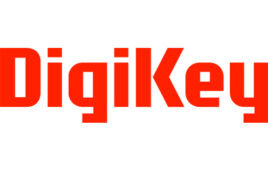Until recently, I was happy with my car. In fact, I’d say that my current vehicle, a 2005 Nissan Murano, is maybe the car I’ve been most pleased with over the years.
So, what happened? A couple months ago, my left side speakers began to go on and off intermittently—so I assumed it was probably a loose wire and not an individual speaker issue. I had the vehicle in to the dealership for another issue, and I asked them to look at it.
After pulling the stereo, the service fellow explained that the radio had a bad channel. A new one, which I could buy from Nissan, would be $375 plus $100 for installation. Except that there really weren’t new ones anymore, I’d actually be buying a remanufactured one. My service manager said that he’d go aftermarket if he were me. But my mind had already gone there. I had wanted a newer stereo that I could plug my iPhone or iPod into, and this was the opportunity to upgrade.
Except that there is no upgrading. None. Zilch. I checked Crutchfield and multiple audio sites, with the same result. There is no such thing as an aftermarket stereo (or adapting brackets) for an ’05 Murano. How could that be?
After doing some online searching, I discovered the problem: The stereo was designed with various features—like temperature control—embedded within it. And a disturbing number of automobile manufacturers are turning to this scheme, essentially disallowing their customers to use aftermarket stereos.
This all leads me to a bigger question—how should we design today? Do we simply design to maximize profit? Or do we design purely for the customer’s needs? Is there a way to do both? It seems awfully shortsighted to design for profit at the expense of the customer.
I fear my car issue is an example of executives forcing short-sighted, near-term gains on engineering teams. Is the stupidity of Wall Street’s “what have you done for me lately (this quarter)?” trickling down into the realm of engineering design? I sure hope not, but I’m not holding my breath.
What management needs to be reminded is that it’s much more expensive to try to win back a lost customer than it is to simply retain an existing one. The cost of making an issue right is much cheaper than the alternative.
So back to my stereo problem. What does Nissan really get out of this? I suppose some accountant somewhere decided that their profit margin on a $375 rebuilt stereo was a critical thing for them to lock their talons onto. So, yes, it looks like they’re going to get that money out of my wallet. But the end result—my passing on a Nissan vehicle next time—will deprive their bottom line of a hell of a lot more than that.
Should we design with our corporate best interests in mind—or the customer’s? Weigh in on Paul’s blog at the Engineering Exchange.
Paul J. Heney – Editorial Director
[email protected]
Filed Under: Commentaries • insights • Technical thinking





Tell Us What You Think!